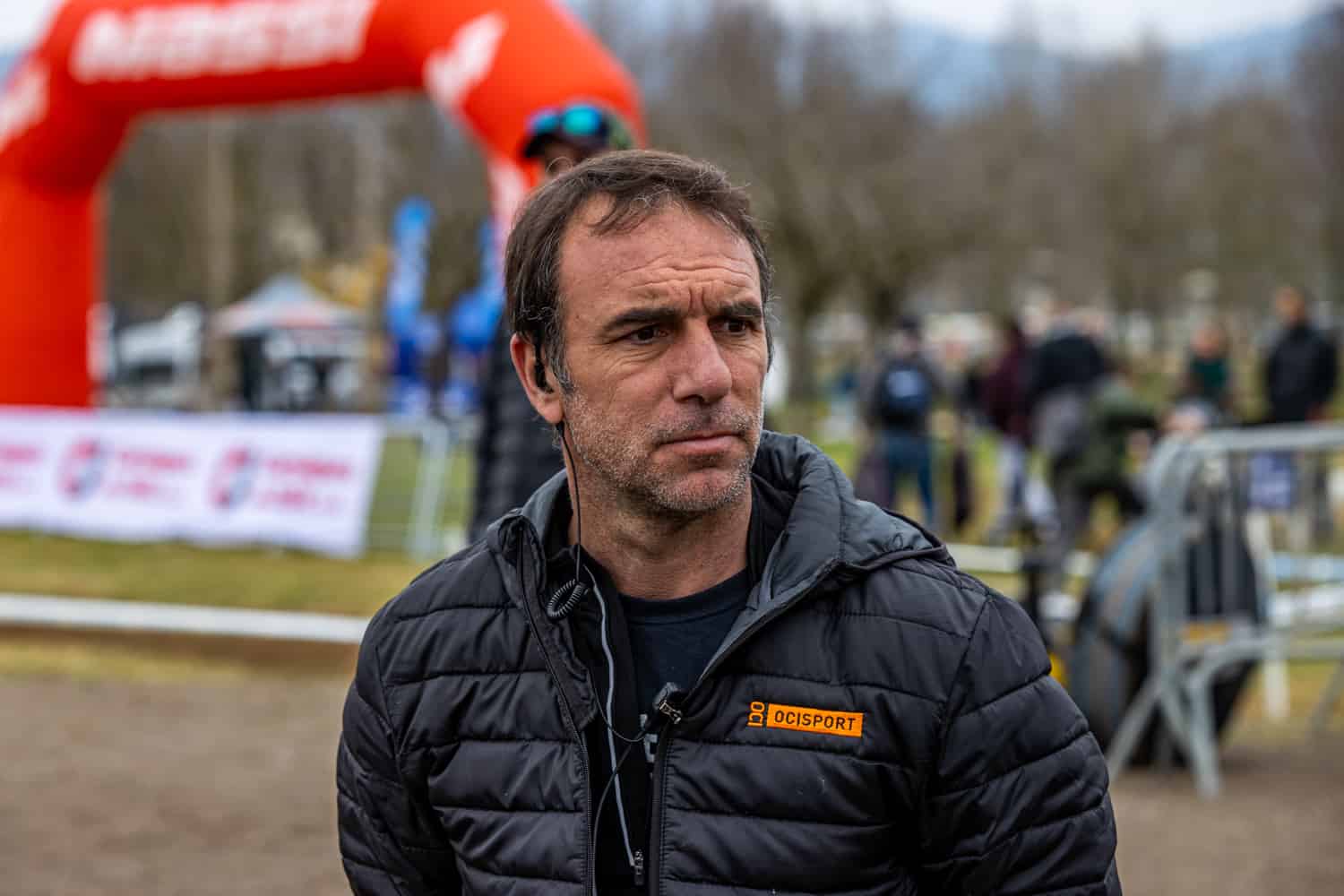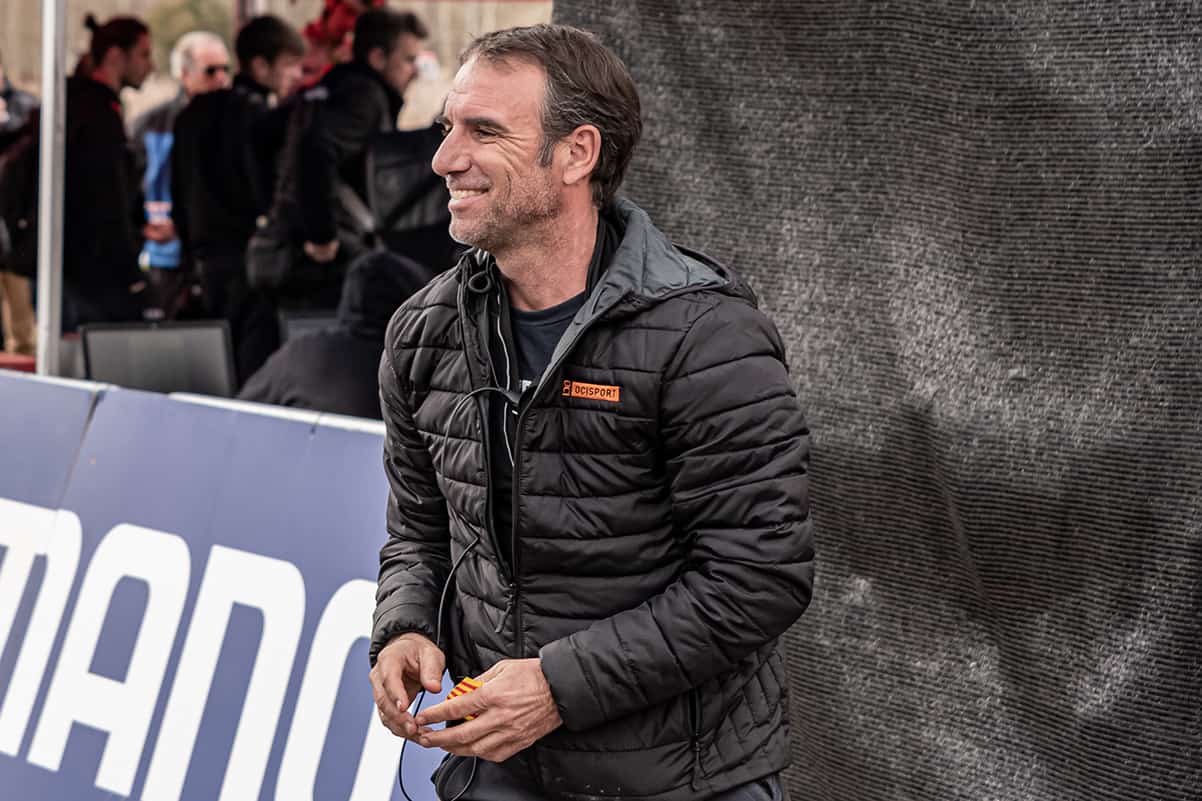1. It’s been six years since Sea Otter Europe launched. Obviously, that was interrupted by Covid, but are you pleased with its progress so far? It seemed to be a fairly instant hit back in 2017?

The truth is that when it first began, in 2017, we were uncertain about how the European market would accept the idea of transferring such a great success story as the Sea Otter Classic in the United States, a global benchmark for many years. Actually, it was better than expected and the market acceptance was far beyond what we thought. It was clear that the European cycling sector was long overdue for such a festival and this was demonstrated by its rapid growth and consolidation. Obviously, COVID-19 hit us hard, but we overcame it thanks to the great effort made by everyone, as was the case in so many other sectors and aspects of life, and all this has made us even stronger, as we can see from the current figures. We are happy with the progress, but we still have a long way to go.
2. How do you see visitor numbers progressing – do you have UK-specific visitor numbers available that you can share? And how they’ve changed?
The progress has been very fast year by year, only six editions have been held, if we consider that two were very affected by COVID-19. Now, we do not think so much for the quantity as for the quality; we do not want to overcrowd the festival and make it uncomfortable for visitors and exhibitors, we prefer to find that profile of the visitor who is very interested and knowledgeable about what they want, that brings a lot of value to the exhibiting brands, that participates in sporting events and in the end they have a great time at Sea Otter Europe.
As far as visitors from the UK are concerned, more and more brands, journalists, visitors and participants are coming. Although it is true that it will never be the most represented nationality due to the distance, we appreciate the contribution of visitors and brands from the UK, which is gradually increasing.
3. While 2023 isn’t the first year global cycle shows have returned after Covid, it feels like this year there’s a bit more confidence and ‘buzz’ around the shows – certainly we saw a good amount of noise around Sea Otter Classic this year. What are your expectations from this year’s Sea Otter Europe and are things now truly ‘back to normal’?
Yes, that’s right. People were very shocked with the closures during COVID-19, as well as the limitations to travel and to do activities and to participate in events. After that, in 2022 we already saw a much faster recovery than what we expected and what had been said, luckily. On the other hand, cycling in general is gaining momentum at the international level due to the policies of public institutions and hundreds of associations and initiatives of all kinds to promote this activity, especially in cities. Electric bicycles in general, urban, cargo bikes, etc. are renewing the potential for growth and diversification of the sector.
4. Can you reveal how many UK trade brands were at the 2022 show and what does Sea Otter Europe give them that they can’t get elsewhere?
Sea Otter Europe is one of the most important festivals on the European continent in terms of size, number of brands, activities and events and visitors, but it has a key differentiating factor, which is its location. Girona and its surroundings are unique. It is an area and a city that has been working for many years to promote cycling, both as a means of transport and as a tourist destination. Many riders and professional teams have been based here for many years. The city of Girona is very beautiful, and its surroundings are ideal and varied for any type of cycling. The gastronomy, the landscape, the roads and, above all, the climate, make it exceptional, and now Sea Otter Europe is added to all this as a further incentive.
5. The bike testing/demo bike element of the show is pretty key to the appeal of Sea Otter Europe – is that fair to say?
Yes, absolutely, Sea Otter Europe’s demobike is one of the keys to its success. The fact that users or potential buyers can test all the bikes of more than 40 brands, of all types, during the festival is exceptional, and all free of charge! It’s like a theme park in the world of cycling. And it’s also great for the brands – it’s no longer just about seeing a bike on a website, in a magazine or in the shop. It’s about being able to touch it, sit on it and test it on real circuits and enjoy and feel what it’s like before you buy it. The direct contact with the technicians of each brand to ask about technical innovations or new models is also a unique event, and it is ideal for brands to have this contact with potential buyers and users of their bicycles, especially for those brands that only sell on-line. Everybody wins.
6.The Euro Mobility Festival is hosted by Sea Otter Europe this year. For those new to that show, can you tell us a bit more about it? It’s interesting to see a cycle sports-orientated festival make room for a cycling/mobility/a-to-b style riding sector too – was it in response to trends in the industry?
 Yes, give the great momentum that cycling is acquiring as a mode of urban transport – no longer as a sporting or recreational element – it made us decide in the last edition that it was necessary to separate these two large blocks of the cycling world, and not only of bicycles but of any element of individual sustainable transport that may be emerging. The needs are different, and so are the brands, the elements themselves, and so on. It is a new model and a new field that has just started and that will have a long and far-reaching future.
Yes, give the great momentum that cycling is acquiring as a mode of urban transport – no longer as a sporting or recreational element – it made us decide in the last edition that it was necessary to separate these two large blocks of the cycling world, and not only of bicycles but of any element of individual sustainable transport that may be emerging. The needs are different, and so are the brands, the elements themselves, and so on. It is a new model and a new field that has just started and that will have a long and far-reaching future.
While it is true that the Euro Mobility Festival (EMF) was born under the umbrella of Sea Otter Europe to take advantage of the momentum of the brand and the visitors to the cycling festival, in the medium term the EMF is set to have its own space, its own personality and in general to be a festival in itself, separate from Sea Otter Europe. In fact, this year, although it is held on the same dates and at the same venue, it has its own space, its own image and way of communicating, its own programme, a different demobike with different circuits, etc.
7. In the run up to this year’s Sea Otter Europe, you’ve picked up on the growth of the cycle tourism market, with cycle tourism stands at the show growing in number year on year. Are you expected to see this expansion continue? Will you be looking at new ways to do more for cycle tourism visitors?
Yes, cycle tourism is a segment of the cycling market that has been growing for many years, and ever since the pandemic, it has multiplied the use of bicycles, including for holidays. It is no longer just an element of everyday or weekend sport or an element of daily transport in cities, it is already one of the most important and fastest growing sub-segments of tourism. Many territories and destinations are specialising and enhancing their attractions and resources to adapt to all types of cycling tourists. Cycle tourism is becoming more and more profitable in the regions; they are quiet, respectful of the destination, demanding and interested in many things such as culture, gastronomy, etc. They are highly appreciated by the regions and an alternative way of creating wealth for areas where industry or other livelihoods have declined.
We are increasingly expanding the space dedicated to this type of exhibitors, such as national tourism agencies, the provinces, incoming and outbound agencies, routes, etc.
8. If someone in the UK cycle trade hasn’t yet visited Sea Otter Europe and is considering it this year, what would you say to them?
Well, we would say the same as we would say to any brand or professional from any European or non-European market: that Sea Otter Europe is one of the most important cycling festivals on the continent, fully consolidated, which is growing more and more as regards international exhibitors, space and brands, as well as visitors. It is a great opportunity to present oneself in the market both at a professional level and end user level, an option to make yourself known, to promote your brand, to get new contacts, new distributors, to test your product, to be a partner of the festival or one of the many sporting events, etc. Sea Otter Europe is a great communication and marketing tool in the European cycling market.






